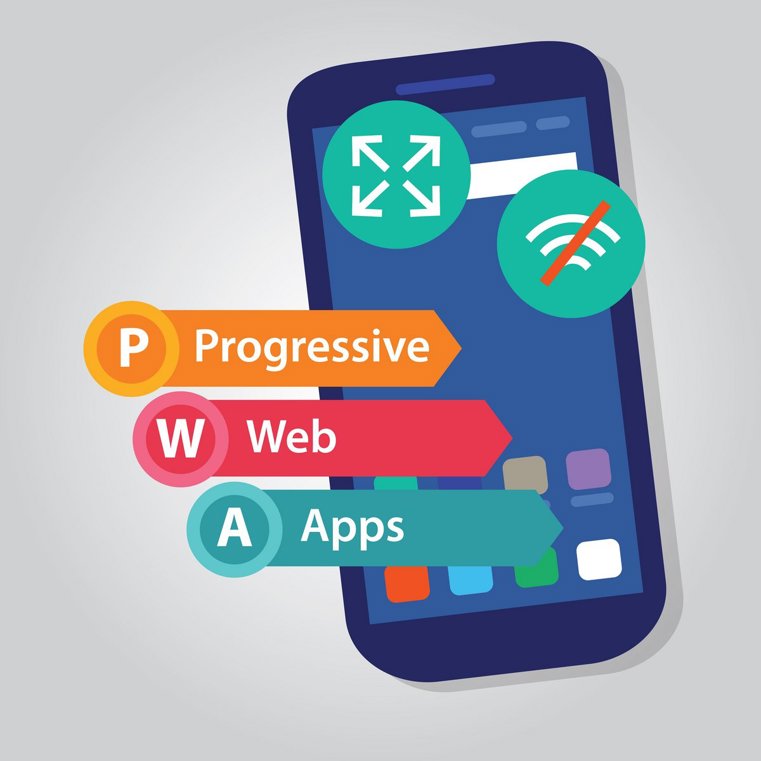
Website Development Things We Need to Focus in 2020
Web technology trends are immensely growing and swiftly evolving in its lifetime since its inception. This development in web technology have proven to be really constructive and have helped very much reaching out vast numbers of people. One can reap benefits of technology by implementing in its early stages and not in its peak. Therefore, it is necessary that you pay heed to the website development trends 2020 and incorporate these into your web application development plan/ website development plan at the earliest.
Royex Technology is a leading website design company in Dubai, which believes that an enterprise website creates the first impression of your business to your potential customers. An aesthetically designed, responsive and mobile friendly website is what every business yearn for. It is, therefore, a matter of tacit acknowledgment that recent businesses need to stay aligned with the latest web development trends and the requirements of their customers.
The developers of the highly competitive website development company are also in the same cusps, who need to keep reinventing themselves in order to remain abreast of the newest trends in web technology.
Website development trends 2020 set up fresh ideas and new innovations which have set up a level of drift for the web developers. The success key for a developer lies in gaining and harnessing foresight into futuristic and most recent trends in web development Dubai to full potential.
In order to become a top web development company there is no better time than today to prepare ourselves for the future competition. To keep pace of this developing world, we need to know the web development trends and technologies that will perhaps shape 2020.
Now we are presenting the top 8 website development trends for 2020 that will dictate in the IT industry in 2020.

1. The Rise in Mobile Users and Responsive Design:
Responsive designs are becoming a necessary thing nowadays. In 2015, mobile devices were served with 35% website traffic. In 2016 the percentage rose to 43%. In 2017, 50.3% website traffic was directed towards mobile devices rather than computers and laptops.
With so much going on, isn’t it exciting that Google is about to release its first mobile indexing officially during 2020 or shortly afterwards.

Wait! What do you understand by this new term Mobile-first Indexing? According to the search engine:
“Google will look at the desktop version of a site and rank it according to the information on the bases of how it looks as the mobile site. Once this update is done, then the reverse step will be taken by the google. They will be looking at your mobile site to rank your desktop version.”
In other words, mobile websites will officially become the end of all website rankings. Building a mobile responsive website will keep us clear.
2. Chatbots and Customer Support:
57% of the people appreciate chatbots for their comfort and instantaneity.
Gartner predicts that approximately 85% of the customer interactions will happen without a human on the business end by 2020. Similarly, according to TechEmergence, chatbots will become the top most used application for consumers across all AI integrations in the next five years.

That’s already a lot of hype.
Chatbot is already in its phase to find its place among customer service professionals which isn’t a big surprise. Businesses can save a lot of money by employing bots instead of humans. Collectively, around $23 billion in the customer service sector.
But what about consumers? Are they interested in talking to a bot instead of a human?
The data is quite surprising. 48% of consumers prefer to contact a company via live chat — for which chatbots are perfect — and a shocking percentage of 95% believe chatbots will be best used for customer service.
Thus, it is evident from the above results that customers are much satisfied to talk to the bots and businesses are eager to use them.
3. API-First Design
The more connected our world becomes, the more APIs that each application ends up having. With the rise of the IoT, our mobile devices, gaming systems, homes, wearable tech, cars and laptops are all connected.
This offers a great convenience to the users. But if the programmer starts building the application in the wrong place, all the connections can get a bit dubious. Traditionally, developers start with the user and builds the application from there. They design the application and add in the appropriate APIs after the statement.

The back-end developer team starts working on an API, and once it’s finished, they give the API to the front-end developer team for testing. At the same time, the front-end team works to develop SDKs to test and double-check the API’s interactions.
But there’s arises a problem. This means that front-end developers are waiting on back-end developers and the process often takes an excessive amount of time and coordination.
However, With the first API design, developers start with the appropriate APIs and then “create the app on top of it”.
Through connecting apps to APIs, developers can save a lot of work while laying the foundations for others to build on.
If you want to get your things done faster and without having the front-end developers to wait on back-end developers at every step of the way, a platform with headless content organization competences - also known as an API-first solution - would be the preeminent way.
4. Motion UI:
The world of internet is colossal. But what you might not know though, is about the average human attention span; which in as a matter of fact worse than that of the average attention span of goldfish as claimed by some sources.
And what do you think is a much better way to grab the attention than with a captivating motion UI?
The Atlantic uses this on their very popular page. As you scroll down the webpage, it changes and adapts itself to keep the customer engaged.
Since there is a problem of attention spans, developers are using this motion UI technology as a plus point to keep the visitor involved till the very end. But of course these developers have to see how successful this strategy is. It can even turn out to be a complete duff. However, we won’t be able to now about this before 2020 or 2021.
5. Progressive Web Applications:
Progressive web applications are websites which are similar in function to a mobile application. Their basic task is to increase alteration and streamline the use of sites on smartphones.

Some of its features worth highlighting are:
• Compliance,
• Offline using ability,
• Synchronization with other devices by using IoT technology,
• Easy installation
One of the most successful application of this Progressive web applications is Starbucks. The company has generated a PWA ordering system which is indistinguishable to a mobile application.
Its offline mode of system offers the customers to:
• Lookout the menu,
• Modify orders and preferences,
• Add products to cart.
Being connected to the network, the user can find the location of the nearest café. He can also view their prices, confirm orders, and just visit Starbucks to pick them up when the order is ready.
Such kind of applications are continuously gaining popularity because they do not occupy much space and allow you to work with the facility at any time, regardless of access to the Internet while providing an interface that is indistinguishable to expedient mobile applications. For this good reason, many companies are starting to implement this technology.
6. Single-Page Websites and Static Websites
1. Single-Page Websites:
The single site pattern discovered its place just recently and is getting increasingly popular. The structure of this Single page websites is as suggested by its name-one long page. The itinerary hinge on viewing over or exploiting seams that trip up or down the page to that definite area.
The greatest position offered for this kind of website is directness. There is no erratic or intense menu to cross. Moreover, the structure functions commendably viewing on smart phones is an emblematic route strategy. This panache offers an acerbic advantage response for forthright online desires and is economical to create and have.
2. Static Websites:
Static sites are extremely crucial. They are coded using HTML and presentations, the equivalent fixed or static substance to each client.
For what reasons individuals need to sufficiently make a gait or three backward with respect to web development in Dubai?
These sites are economically made, shielded and loaded swiftly. Renaissance being used for cost-cognizant ventures should be observed by Static sites, as they are miles in front the web's earliest stages.
7. Eliminating Flash Player
For Site permitting liveliness and the crusade perspectives, the glare was a very invigorating segment. While it was usually operated for a substantial span of time, it is currently something that everybody hopes to be eliminated.
Adobe this year announced that the Flash Player will not be refreshed or circulated after 2020 ever again. With most kinds of cell phones also, it is erratic. Instead of missing out on web traffic, particularly on your portable website, you ought to swap any Flash with HTML5, which is promptly turning into the most renowned and prevalent organization on the web.
8. Voice search technology
Voice search technology is growing at enormous proportions in the web development nowadays. Voice search engine countenances audio technology instead of a type the keywords into the system to users.

According to the Global web index reports, 27% of the global population prefers the voice search on mobile. Amazon Alexa, Microsoft Cortana, Siri, and Google assistant are some of the applications that have voice search optimization capabilities.





